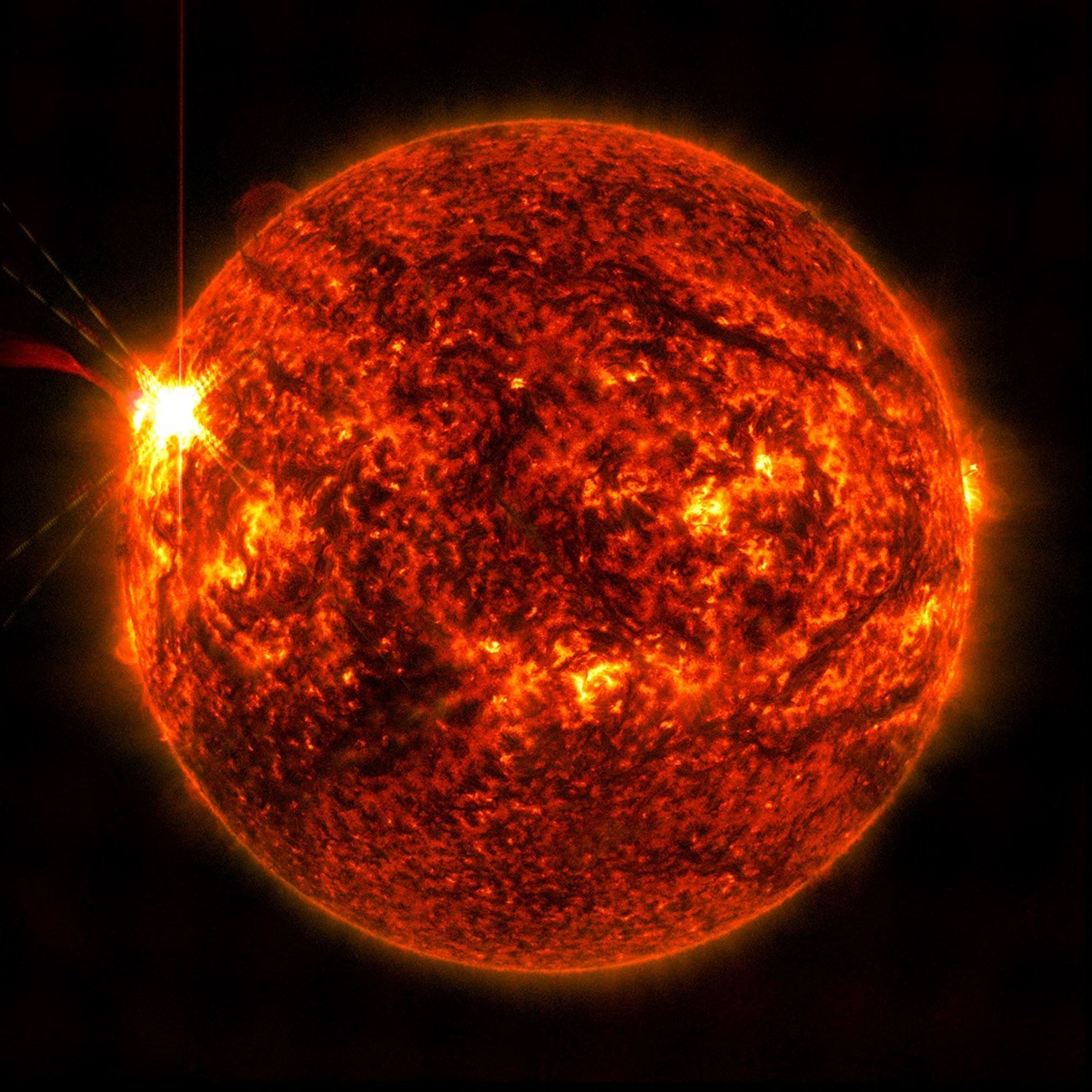The Sun recently displayed its immense power with the emission of a significant solar flare.

This strong burst of energy peaked at approximately 4:25 a.m. ET on Wednesday, May 14th. The event was meticulously captured by NASA’s Solar Dynamics Observatory (SDO), a dedicated spacecraft that continuously observes our star, providing crucial data and imagery for space weather researchers and forecasters. The visualization of such an intense flare underscores the dynamic and sometimes unpredictable nature of the Sun.
Understanding Solar Flares: What Are They?
Solar flares are sudden, intense bursts of radiation that originate from the Sun’s surface, specifically from regions of strong magnetic fields, often associated with sunspots. These flares are the largest explosive events in our solar system, releasing energy equivalent to millions of hydrogen bombs in just minutes.
They are composed of highly energized photons (light particles) that travel at the speed of light, reaching Earth in about eight minutes. While distinct from Coronal Mass Ejections (CMEs) – massive expulsions of solar plasma and magnetic field – strong flares can sometimes be accompanied by CMEs, amplifying potential impacts. The classification of these events is critical for understanding their potential effects on our planet and space-based technologies.
The X-Class: Classifying Solar Flare Intensity
Solar flares are classified into five main categories based on their X-ray brightness, measured at Earth by satellites. These classes are A, B, C, M, and X, with each class being ten times more powerful than the last. For instance, an M-class flare is ten times more intense than a C-class flare, and an X-class flare is ten times stronger than an M-class flare.
The flare observed on May 14th was categorized as an X2.7 flare. The “X” denotes the most intense class of flares, representing the most powerful solar eruptions. The number following the X (in this case, 2.7) provides a more precise indication of its strength within that category, with higher numbers signifying greater intensity. An X2.7 flare is a considerably strong event, capable of producing significant effects if directed towards Earth.
Potential Impacts on Earth and Space Infrastructure
The energy released by powerful solar flares, particularly X-class events, can have widespread repercussions for our technologically dependent society and operations in space. These impacts can include:
- Radio Communications Disruptions: The X-ray and ultraviolet radiation from a flare can ionize Earth’s upper atmosphere, causing disruptions or even complete blackouts of high-frequency (HF) radio signals. This affects vital communications used by aviation, maritime operations, military forces, and amateur radio enthusiasts, especially on the sunlit side of the planet.
- Electric Power Grids: While not directly caused by the flare’s radiation, very strong flares can induce geomagnetically induced currents (GICs) in long power transmission lines, leading to voltage irregularities, overloading transformers, and potentially causing widespread power outages.
- Navigation Signals (GPS): The changes in the ionosphere can introduce errors into Global Positioning System (GPS) signals, degrading the accuracy of navigation for various applications, from consumer devices to precision agriculture and military systems.
- Spacecraft and Astronaut Risks: For satellites orbiting Earth, solar flares can cause temporary disruptions or permanent damage to electronic components due to increased radiation. For astronauts aboard the International Space Station (ISS) or those on future deep-space missions, strong flares pose a significant radiation hazard, increasing their risk of radiation exposure.
Monitoring the Sun: NASA’s Role in Space Weather Research
Understanding and predicting space weather events like solar flares is a critical scientific endeavor. NASA operates as a crucial research arm of the nation’s space weather effort. The agency deploys a sophisticated fleet of spacecraft, such as the Solar Dynamics Observatory (SDO), the Parker Solar Probe, and the Magnetospheric Multiscale (MMS) mission, among others.
These observatories are designed to constantly monitor the Sun and our surrounding space environment. Their instruments gather data on everything from the Sun’s internal activity and its dynamic atmosphere (corona) to the flow of charged particles and magnetic fields in the space around Earth. This extensive research is fundamental to improving our scientific understanding of solar phenomena and enhancing space weather prediction capabilities.
NOAA’s Space Weather Prediction Center: Your Official Source
While NASA focuses on the research aspect, the National Oceanic and Atmospheric Administration (NOAA) plays the leading role in providing operational space weather services. NOAA’s Space Weather Prediction Center (SWPC) is the official U.S. government source for space weather forecasts, watches, warnings, and alerts.
The SWPC continuously monitors solar activity and its potential impacts, disseminating crucial information to industries and government agencies that rely on space-based technologies or are susceptible to space weather effects. For the most up-to-date and authoritative information on space weather, the public and critical infrastructure operators are encouraged to visit the SWPC’s official website at https://spaceweather.gov/.
Staying Informed About Space Weather
The occurrence of powerful solar flares like the recent X2.7 event serves as a reminder of the dynamic interplay between our Sun and Earth’s technological infrastructure. As our society becomes increasingly reliant on satellite communications, GPS, and robust power grids, staying informed about space weather becomes ever more important.
By understanding the potential impacts and knowing where to access official forecasts and alerts from organizations like NOAA SWPC, individuals and industries can better prepare for and mitigate the effects of these powerful solar phenomena.








